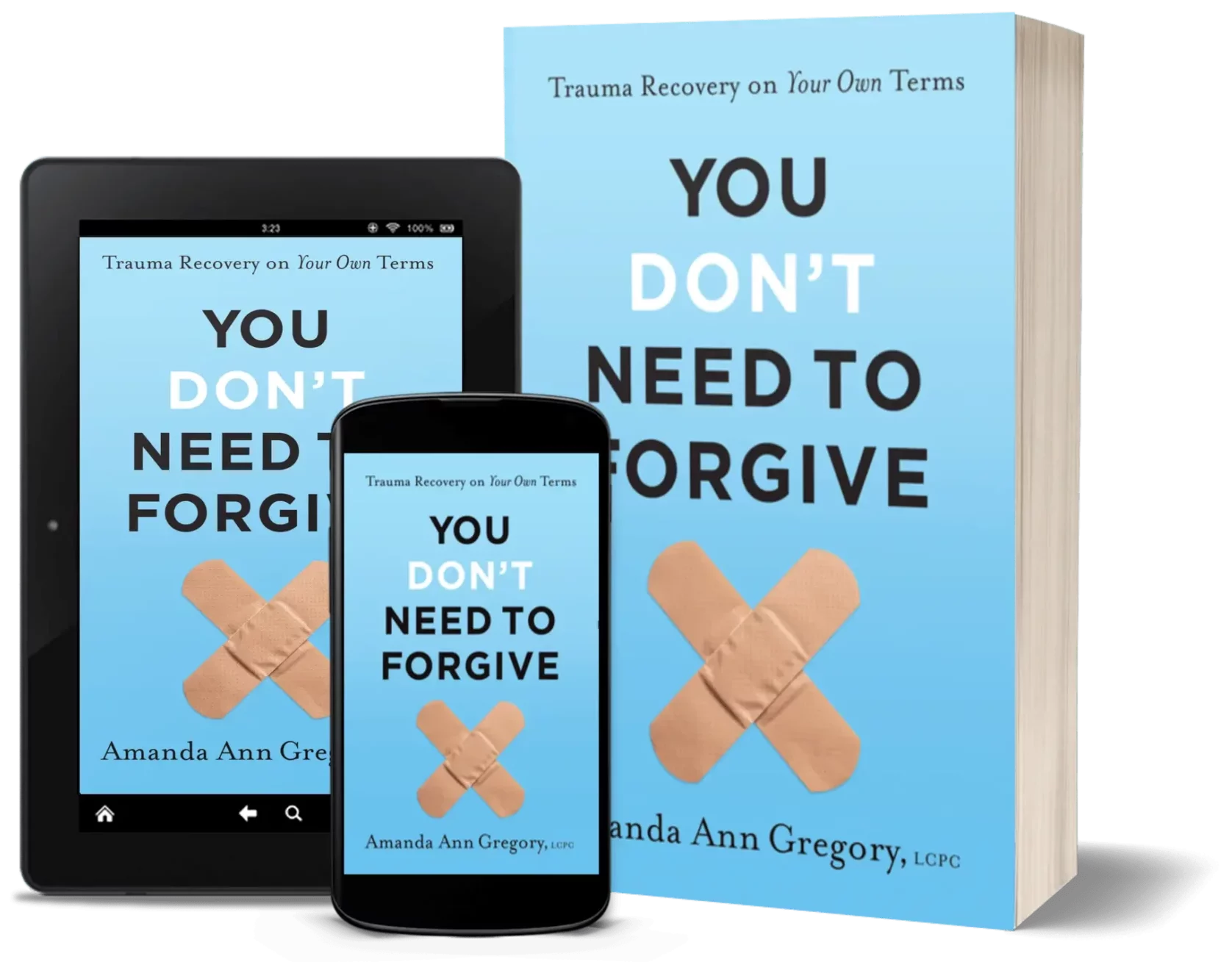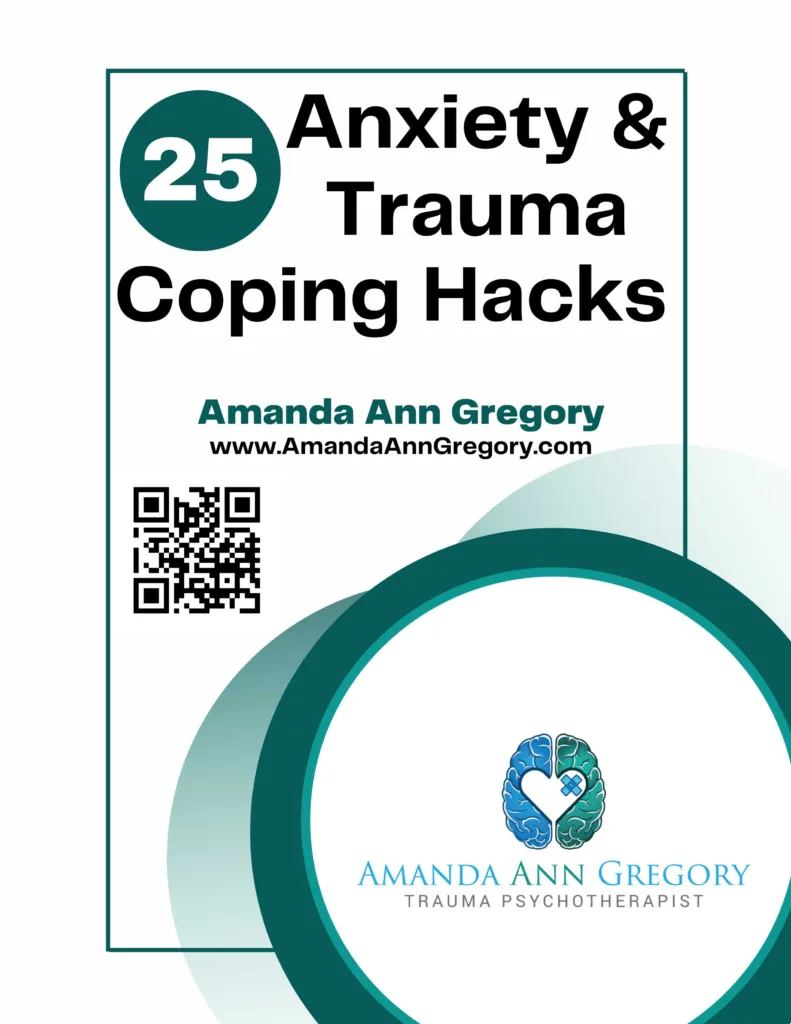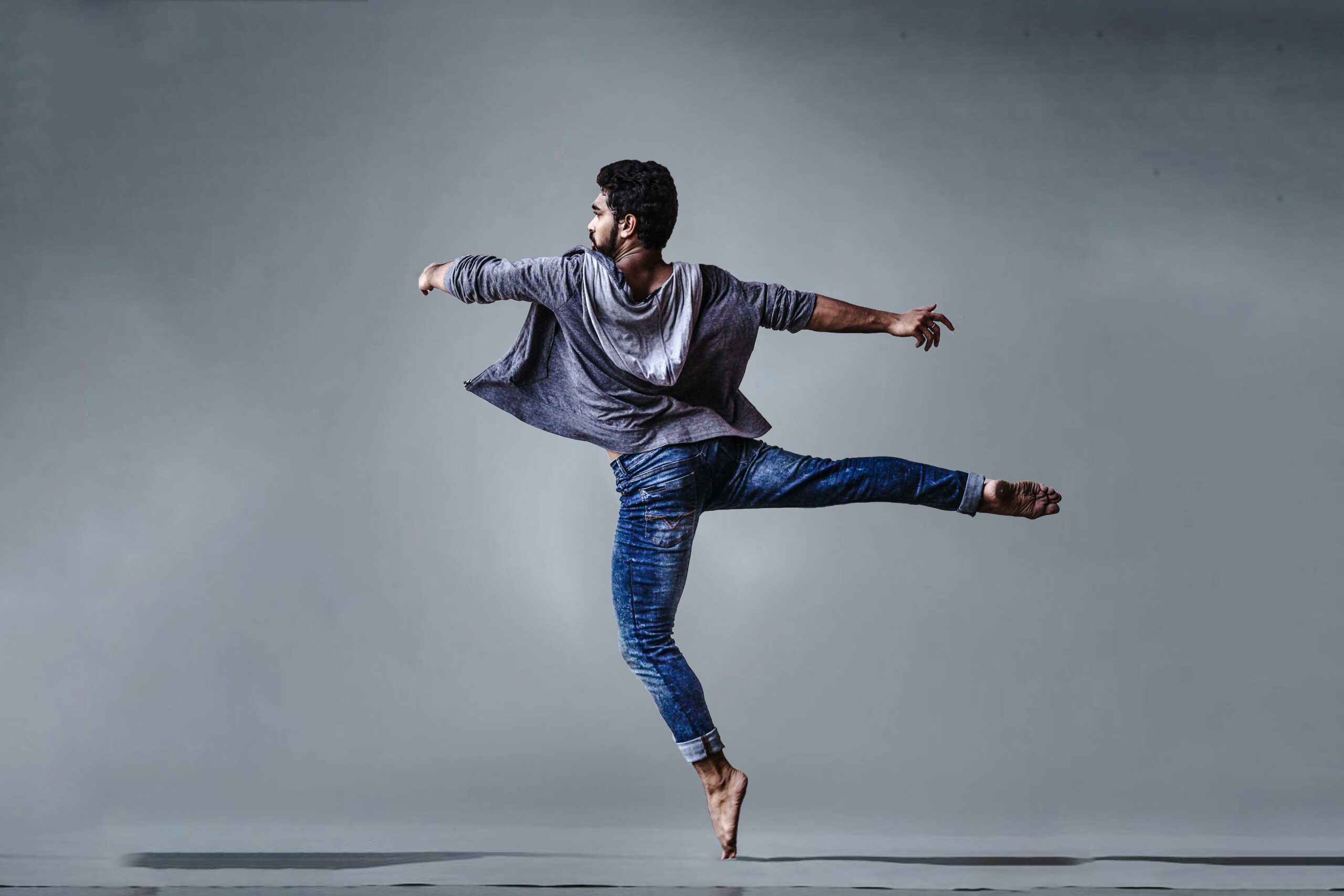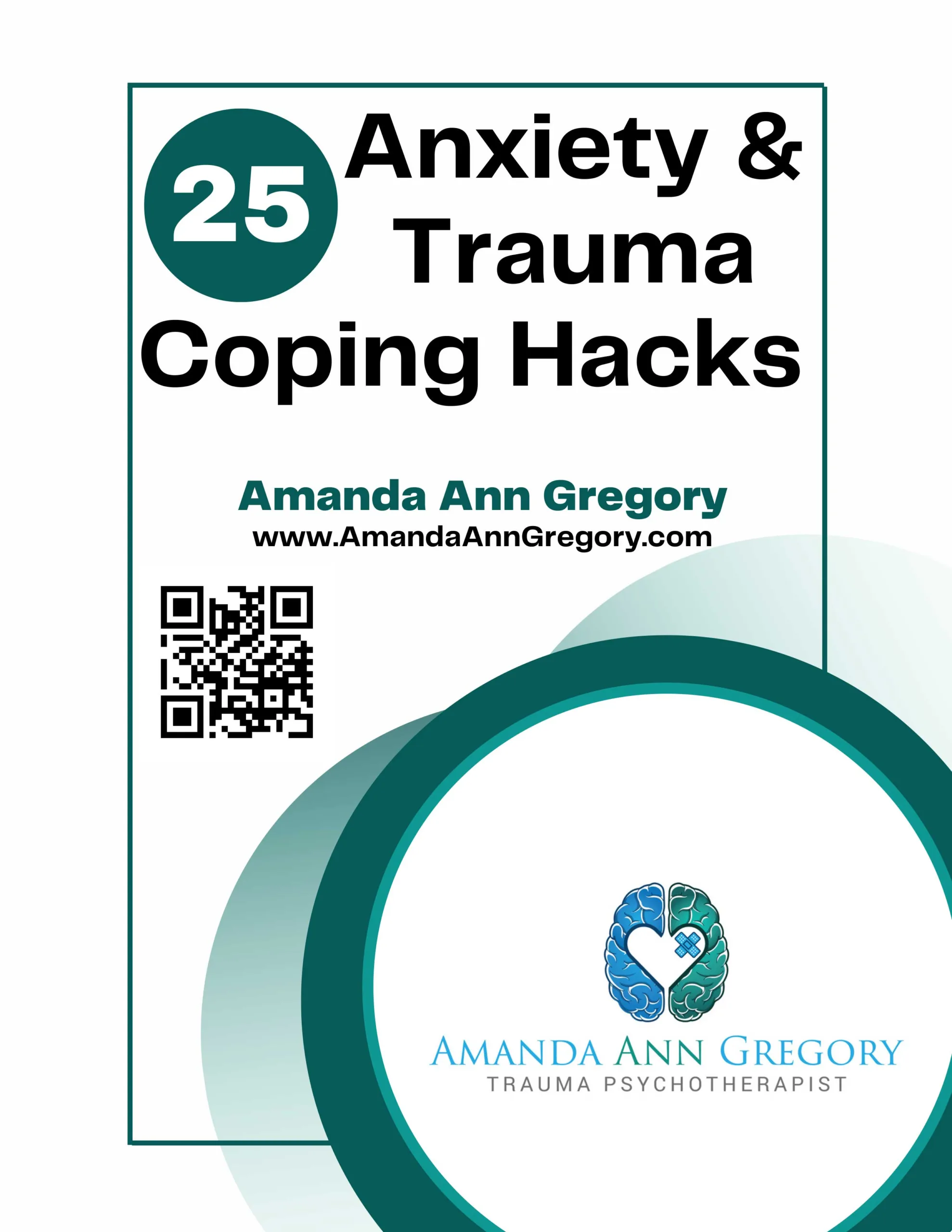As a trauma psychotherapist and author of the book, You Don’t Need to Forgive: Trauma Recovery on Your Own Terms, I prefer bottom-up coping techniques due to their effectiveness in addressing trauma responses. Before you learn these skills, here’s a few tips:
- Coping skills are not one size fits all. There is no one coping skill that works for everyone. In fact, certain coping mechanisms may work only in certain environments, times of day, or when addressing specific symptoms. The key is to discover multiple skills that work for you which can be used with flexibility.
- Practice coping skills when you’re feeling fine. The most common mistake my clients make when they learn a new skill is that they practice it only when they need it, such as when they’re experiencing traumatic stress. It’s important to also practice when the skill is not needed. This will allow you to become comfortable using the skill and you’ll be more likely to be able to implement the skill when needed.
- Make every skill your own. Everyone is different, and that means people need not only differently coping techniques but also different variations on the same techniques. There is no right or wrong way to cope as long as it’s beneficial and does not harm anyone. When you learn a new skill, it’s OK to tweak it in order to meet your needs.
- Have realistic expectations. Coping skills are not magic bullets. They don’t work 100% of the time in every situation. When you learn a new skill, make sure that your expectations of its effectiveness are realistic. Successful coping skills may work some of the time, not all the time.
- Combine successful skills. What if you used two successful coping mechanisms together as opposed to only one? Give it a try. This might increase their effectiveness.
These are 5 of the most popular and effective coping mechanisms that I teach my clients.
Rhythmic Movement
How would you calm a crying infant or toddler? You might instinctually pick up the child and rock, sway, or gently bounce them in your arms. This is because rhythmic movement is an ancient calming intervention. Your ancestors not only used rhythmic movement to soothe their children, but also to calm themselves. They danced, they drummed, they moved together in circles around fires in celebration and ceremony. Some say that rhythmic movement is ingrained in our bones and that it’s our bodies’ natural way to self-soothe. You do not need to be a good dancer or have a sense of good rhythm. You just need to allow your body to lead you as you follow.
Try these methods of rhythmic movement:
- Dance. It doesn’t matter what type of dance it is or whether you dance with others or alone. The point is that you move your body to some type of rhythm.
- Throw a ball. Repetitively bouncing, throwing, or catching a ball is a type of rhythmic movement. You can do this alone or with another person.
- Play a musical instrument. You can also create a beat with your hands or body.
- Rock or sway. Allow your body to rock or sway at a pace that feels calming. You can use items to help with these movements, such as swings and rocking chairs. You can also ask someone to rock you while they embrace you.
Open Postures
Trauma responses often take on closed postures. Imagine a posture in which your throat, chest, and genitals are protected. You’re hunched over, head slightly down, shoulder pushed inward, legs/arms crossed, hands crossed and placed in front of your body or on your lap, and perhaps an item is positioned in front of you such as a backpack, beverage or handbag. This reflects a closed posture. An open posture is a posture in which your throat, chest, and genitals are unprotected. Your shoulders are pulled back, head is up, legs/arms uncrossed, hands are unclasped and at your sides or engaged away from your body, and no large items are placed in front of you.
Engaging in an open posture can increase feelings of safety, which can neutralize traumatic stress. When you’re in an open posture you are telling your body, “I am safe.” What’s your open posture? Everyone is different. Some people need to forcefully push out their chest while others need to gentle push their shoulders back. Some need to look straight ahead while others need to look up to the sky in order to open their neck. My open posture looks like a cactus with my arms bent and chest puffed out.
When you’re experiencing traumatic stress or you are in a situation that you find anxiety provoking or intimidating, sit or stand in an open posture (even if this posture does not feel comfortable). Notice how you’re feeling. Do you feel more confident? Less anxious? More capable? Safer? If you notice a positive impact, continue to practice siting and standing in this open posture.
Sensory Grounding
Grounding techniques often use your five senses—sight, sound, touch, smell, and taste—to help you to connect to the present moment. Engaging the senses helps the brain to quickly refocus.
Give these grounding exercises a try:
Sight.
- Focus on a particular object or your immediate surroundings and notice all of the details that you see. Identify colors, shapes, imperfections, things that are out of place, objects that you like or dislike, and so on.
- Pick five objects that you can see and focus on each one for five seconds in turn. Then move on to the next. Change the order each time you begin again.
- Play a counting game based on what you see in your environment. Examples: How many squares can I see? How many objects are made of wood? How many shades of blue can I spot?
Sound
- Stop and listen. Try to identify all the sounds that you hear. How many different sounds can you pick out? Be patient, as it may take a few moments for background sounds to become noticeable.
- Make your own noise. Read something out loud, sing, or make a sound that only you can hear. Don’t just make the sound—listen to it closely.
- Listen to music. Try to isolate all the instruments you hear—listen to them separately and then together.
Touch
- Feel the ground below your feet or the chair beneath you. Notice how it feels to be supported. To intensify this effect, press your feet firmly into the floor or grab tightly onto your chair.
- Place something cold on your face or wrists or on the back of your neck. Feel how your body responds.
- Touch something close to you and notice everything about how it feels. You can use your phone, keys, purse or wallet, pillow, or whatever is nearby. Pay attention to details of the texture and temperature.
Smell
- Stop and smell your environment. Try to identify every scent that you can. Be patient—some scents are mild, and it takes focus for them to become noticeable.
- Smell an essential oil, a perfume, a cologne, a candle, or anything that is strongly scented. Breathe it in deeply, focusing intently on the aroma.
Taste
- Notice whatever taste is in your mouth right now. Focus solely on that. What does your mouth taste like?
- Taste something that has a powerful flavor, like a lemon, hot sauce, or peppermint. Let the flavor run its course in your taste buds until you can taste it less and less.
- Drink something warm or cold. Recognize how it feels as it is in your mouth and as it travels down your throat. Savor the experience.
Active Muscle Relaxation
Muscle tension is a common physical symptom of trauma. Loosening your muscles can calm your body which in turn will calm your mind. You can focus your attention on one muscle group at a time until that muscle group releases tension, or you can intentionally tighten your muscles and then release them in order to achieve a calming effect.
Try these steps:
- Tightly clench one muscle group by tensing the muscles for 10 seconds
- Let go for 20 seconds
- When letting go, try not to move that muscle group for 20 seconds.
- Repeat as needed and/or focus on different muscle groups.
Diaphragmatic Deep Breathing
This technique allows lots of oxygen to quickly enter your body, which can result in a calming sensation. While sitting or standing breathe with your diaphragm. A simple way to achieve this is to imagine that you are breathing from your stomach rather than your lungs. When you breathe in, your stomach should rise or expand, and it will fall or contract as you breathe out. Try placing your one hand on your chest and the other on your stomach. Is your stomach rising? Then you’re doing it right!
Here are some deep breathing techniques:
Puckered-Lip Breathing (2-4)
- Breathe in normally for 2 seconds.
- Pucker your lips, as if you were about to drink through a straw.
- Exhale through puckered lips for 4 seconds
- Repeat
Square Breathing (4-4-4-4)
- Breathe in for 4 seconds.
- Hold your breath for 4 seconds.
- Exhale for 4 seconds.
- Hold for 4 seconds before inhaling.
- Repeat
Deeper Breathing (4-7-8)
- Breathe in for 4 seconds.
- Hold your breath for 7 seconds.
- Exhale for 8 seconds.
- Repeat
Give these 5 coping techniques a try. Remember, practice when you’re feeling fine, combine skills, make them your own, and have realistic expectations.
Purchase my book, You Don’t Need to Forgive

Sign up to get your Free eBook: 25 Anxiety & Trauma Coping Hacks

Hire me to speak at your event! Contact Me






